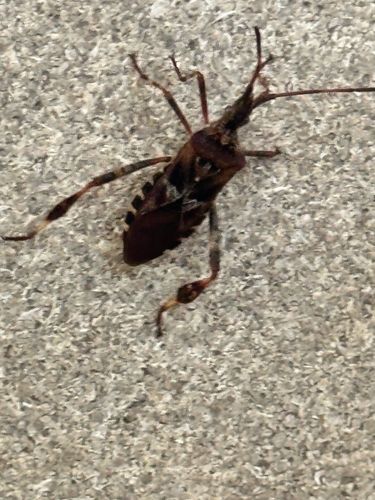Leaf-footed Bug
Scientific Name: Acanthocephala terminalis (likely, based on appearance)
Order & Family: Hemiptera, Coreidae (Leaf-footed Bugs)
Size: Typically 15-20 mm (0.6-0.8 inches) in length for adults.

Natural Habitat
Found on various plants and trees, often in gardens, agricultural fields, woodlands, and urban areas. They prefer feeding on fruits, nuts, and seeds.
Diet & Feeding
Herbivorous. These bugs feed on the sap of plants, using their piercing-sucking mouthparts. They are known to feed on a wide range of plants, including ornamental plants, fruits (like pomegranates, citrus), vegetables, and nuts (pecans, almonds).
Behavior Patterns
Adults and nymphs feed by piercing plant tissues and sucking out sap. They are known for their leaf-like expansions on their hind legs, which gives them their common name. They can fly and often produce a foul-smelling liquid when disturbed as a defense mechanism. They are active during warmer months and lay eggs on host plants.
Risks & Benefits
Potential risks: Considered agricultural pests, especially in fruit and nut orchards, as their feeding can cause damage to fruits, leading to premature drop, discoloration, or malformation. Large infestations can cause significant crop loss. They can sometimes enter homes, becoming a nuisance. Benefits: In some ecosystems, they may contribute to seed dispersal or serve as a food source for other animals, but their pest status often outweighs these minor benefits.
Identified on: 9/18/2025